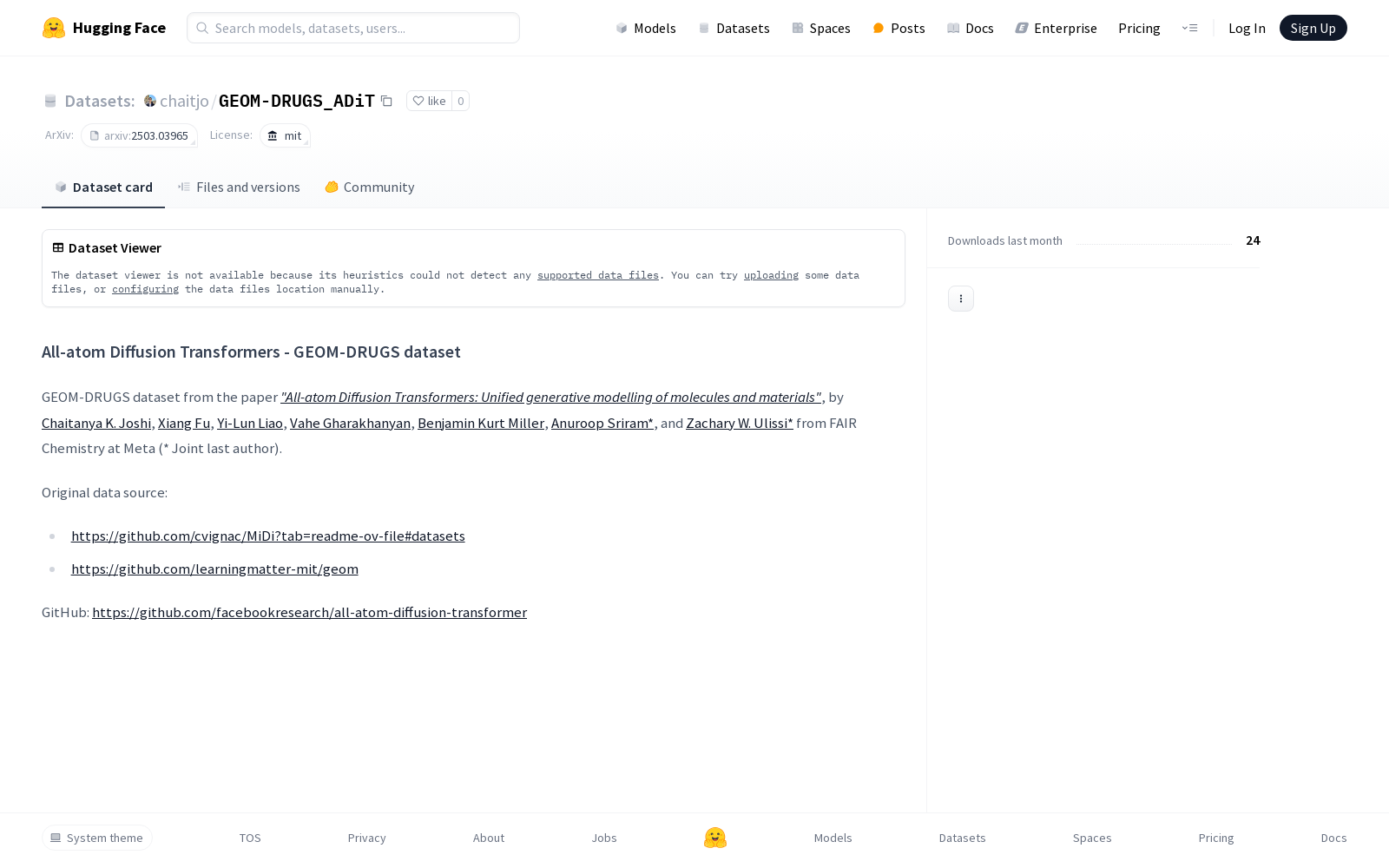GEOM-DRUGS_ADiT|分子建模数据集|材料科学数据集
收藏GEOM-DRUGS数据集概述
数据集来源
- 论文标题:All-atom Diffusion Transformers: Unified generative modelling of molecules and materials
- 论文链接:https://www.arxiv.org/abs/2503.03965
- 作者:Chaitanya K. Joshi, Xiang Fu, Yi-Lun Liao, Vahe Gharakhanyan, Benjamin Kurt Miller, Anuroop Sriram*, Zachary W. Ulissi*
- 机构:FAIR Chemistry at Meta
原始数据源
- https://github.com/cvignac/MiDi?tab=readme-ov-file#datasets
- https://github.com/learningmatter-mit/geom
相关资源
- GitHub项目:https://github.com/facebookresearch/all-atom-diffusion-transformer
许可信息
- 许可证类型:MIT

LIDC-IDRI
LIDC-IDRI 数据集包含来自四位经验丰富的胸部放射科医师的病变注释。 LIDC-IDRI 包含来自 1010 名肺部患者的 1018 份低剂量肺部 CT。
OpenDataLab 收录
中国交通事故深度调查(CIDAS)数据集
交通事故深度调查数据通过采用科学系统方法现场调查中国道路上实际发生交通事故相关的道路环境、道路交通行为、车辆损坏、人员损伤信息,以探究碰撞事故中车损和人伤机理。目前已积累深度调查事故10000余例,单个案例信息包含人、车 、路和环境多维信息组成的3000多个字段。该数据集可作为深入分析中国道路交通事故工况特征,探索事故预防和损伤防护措施的关键数据源,为制定汽车安全法规和标准、完善汽车测评试验规程、
北方大数据交易中心 收录
FAOSTAT
FAOSTAT provides time-series data about agriculture, nutrition, fisheries, forestry and food aid by country and region from 1961 to present. FAOSTAT is a multilingual database. Data can be searched, browsed, and downloaded.
re3data.org 收录
URPC系列数据集, S-URPC2019, UDD
URPC系列数据集包括URPC2017至URPC2020DL,主要用于水下目标的检测和分类。S-URPC2019专注于水下环境的特定检测任务。UDD数据集信息未在README中详细描述。
github 收录
LibriSpeech
LibriSpeech 是一个大约 1000 小时的 16kHz 英语朗读语音语料库,由 Vassil Panayotov 在 Daniel Povey 的协助下编写。数据来自 LibriVox 项目的已读有声读物,并经过仔细分割和对齐。
OpenDataLab 收录
